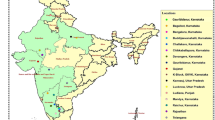Abstract
China has been importing sunflower hybrid seeds for commercial planting from other countries in recent years. Tianjin Entry-Exit Inspection and Quarantine Bureau isolated nine fungal strains similar to Phoma macdonaldii, which causes black stem, from Argentine sunflower seeds. Isolations were made from the debris in with seed not from the seed were slow-growing on PDA, velutinous or flocculent form, irregular on the edge, milk white to ivory color. These isolates were observed for appearance of pycnidia containing guttulate conidia on PDA and on sterile filter paper. DNA extractions from mycelia of the isolates were amplified by ITS1/ ITS4 and ActF1/R1 primers. Compared with the sequences in the NCBI database, these sequences had a similarity of 98–100% with Phoma macdonaldii. All isolates were tested on four true-leaf sunflower seedlings using hypocotyls inoculation. Typical black oval lesions were found on the stem after 7 d and black pycnidia were found on the lesions. Based on the morphological characteristics, sequences analysis and pathogenicity test, these nine isolates were identified as Phoma macdonaldii. This is the first intercept record of Phoma macdonaldii from imported sunflower seeds in China.




Similar content being viewed by others
References
Boerema GH, Gruyter Jde, Noordeloos ME, Hamers MEC (2004) Phoma identification manual. In: G Phoma sect. Plenodomus, CABI Publishing, UK, pp 364–366.
Chen WM, Guo QY, Song HM et al (2008a) Domestic new plant disease: the first report of the occurrence of sunflower Phoma Black Stem in Ili River Valley, Sinkiang, China. Journal of Yunnan Agricultural University 23(5):609–612
Chen WM, Guo QY, Song HM et al (2008b) Phoma macdonaldii found in the Yili River valley, Xinjiang. Plant Quarantine 22(3):176–178
Chen WM, Ma FJ, Li XQ et al (2008c) A preliminary test and study of seed-borne Phoma macdonaldii. Proceedings of the Annual Meeting of Chinese Society for Plant Pathology. 633–636.
Debaeke P, Peres A (2003) Influence of sunflower (Helianthus annuus L.) crop management on Phoma black stem (Phoma macdonaldii Boerema). Crop Protect 22:741–752
Donald PA, Bugbee WM, Venette JR (1986) First report of Leptosphaeria lindquistii (sexual stage of Phoma macdonaldii) on sunflower in North Dakota and Minnesota. Plant Dis 70(4):352
Donald PA, Venette JR, Gulya TJ (1987) Relationship between Phoma macdonaldii and premature death of sunflower in North Dakota. Plant Dis 71(5):466–468
Larfeil C, Dechamps-Guillaume G, Barrault G (2002) Phoma macdonaldii Boerema/Helianthus annuus L. interaction. Helia 36:153–160
McDonald WC (1964) Phoma black stem of sunflower. Phytopathology 54:492–493
Miric E, Aitken EAB, Goulter KC (1999) Identification in Australia of the quarantine pathogen of sunflower Phoma macdonaldii (Teleomorph: Leptosphaeria linquistii). Aust J Agr Res 50:325–332
Roustaee A, Costes S, Dechamp-Guillaume G, Barrault G (2000) Phenotypic variability of Leptosphaeria lindquistii (anamorph: Phoma macdonaldii) a fungal pathogen of sunflower. Plant Pathol 49:227–234
Sackson WE (1992) On a treadmill: breeding sunflowers for resistance to disease. Annu Rev Phytopathol 30:529–551
Shang HS, Hu XP (2001) Diseases and pests of quarantine significance in sunflower. Plant Quarantine 15(3):152–154
Smetnik AI, Aleksandrov IN, Skripka OV, Izmalkova AG (1998) Sunflower seeds as a way of preservation of Phomopsis infection. Zashchita i Karantin Rastenii 1:35–36
Stajic M, Vukojevic J, Duletic LS, Lacok N (2001) Development of reproductive structures of Phomopsis helianthi Munt.-Cvet. et al. and Phoma macdonaldii Boerema on sunflower seeds. Helia 24(34):83–93
Voigt K, Cozijnsen AJ, Kroymann J et al (2005) Phylogenetic relationships between members of the crucifer pathogenic Leptosphaeria macdonaldii species complex as shown by mating type (MAT1-2), actin, and β-tubulin sequences. Mol Phylogenet Evol 37:541–557
Vukojevic J, Mihaljcevic M, Franic MD (2001) Variability of Phomopsis populations in sunflower (Helianthus annuus L.). Helia 24(34):69–76
White TJ, Bruns T, Lee S, Taylor J (1990) Amplification and direct sequencing of fungal ribosomal RNA genes for phylogenetics. PCR protocols a guide to methods and applications. Academic Press, pp 315–322.
Acknowledgments
The authors thank Dr John Rupe, University of Arkansas, for kindly instruction and advised on the writing.
Author information
Authors and Affiliations
Corresponding author
Rights and permissions
About this article
Cite this article
Luo, J., Wu, P., Liu, Y. et al. Detection and identification of Phoma macdonaldii in sunflower seeds imported from Argentina. Australasian Plant Pathol. 40, 504–509 (2011). https://doi.org/10.1007/s13313-011-0079-1
Received:
Accepted:
Published:
Issue Date:
DOI: https://doi.org/10.1007/s13313-011-0079-1




